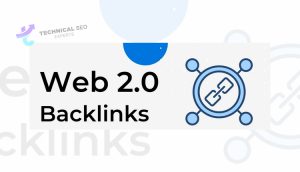In 2024, businesses are more interested than ever in finding skilled SEO managers. They really care about how they do online. It doesn’t matter if you’re an experienced SEO expert wanting to be a manager or if you’re new to SEO and want to become a manager. We made this guide to help you get ready for SEO manager job interviews. Inside, you’ll find 50 important questions and answers. These will not only help you understand SEO better but also prepare you for what’s coming in 2024. So, get ready, because we’re going to explore important SEO topics that will help you succeed as an SEO manager.
Table of Contents
ToggleQuestions and Answers for SEO Manager Interviews in 2024:
1-Can you explain the difference between on-page and off-page SEO?
On-page SEO refers to optimizing elements directly on a website, such as content, meta tags, and HTML structure, to improve its search engine rankings. Off-page SEO, on the other hand, involves activities performed outside the website, like link building and social media marketing, to enhance its authority and reputation in search engines.
2-Explain the concept of “search intent” in SEO and why it is important.
Search intent refers to the reason behind a user’s online search. It’s crucial in SEO because understanding what users are looking for helps us create content that meets their needs. There are four main types of search intent:
Informational (seeking information)
Navigational (looking for a specific website)
Transactional (wanting to buy something)
Commercial investigation (researching products or services before making a purchase)
By aligning your content with user intent, you can improve your SEO and user satisfaction.
3-What are the key factors you consider when conducting keyword research for an SEO campaign?
Keyword research is fundamental to SEO. I consider factors like search volume, keyword relevance to the business, competition, and user intent. Long-tail keywords are also crucial as they often have less competition and can be highly targeted.
4-How do you handle duplicate content issues on a website, and why is it important to address them?
Duplicate content can harm a website’s SEO. I address it by implementing canonical tags, ensuring consistent URL structure, and using 301 redirects when necessary. It’s crucial to address duplicate content because search engines may struggle to determine which page to rank, potentially leading to lower rankings and a poor user experience.
5-What is the “Google Algorithm,” and why is it essential for SEO managers to keep up with its changes?
The Google Algorithm is like a set of rules and calculations that Google uses to determine which websites should appear in its search results and how they should be ranked. SEO managers need to stay updated with its changes because Google frequently updates its algorithm to provide the best search results to users. Understanding these changes helps SEO managers adapt their strategies to maintain or improve their website’s rankings.
6-How do you perform a competitive analysis in SEO, and what insights can it provide?
Competitive analysis in SEO involves studying your competitors’ websites and strategies to identify strengths and weaknesses. You can use tools to analyze their keywords, backlinks, and content. This analysis provides insights into which keywords to target, which content topics are popular, and where you can improve. It’s a valuable way to stay competitive and optimize your SEO efforts.
7-What is a “404 error,” and how can it affect a website’s SEO?
A 404 error is like a dead end on a website. It happens when a page can’t be found. It can hurt SEO because if people and Google find lots of these dead ends, they may think your site isn’t well-maintained.
8-Explain the concept of backlinks and their significance in SEO
Backlinks are links from other websites to your site. They are crucial in SEO because they signal trust and authority to search engines. Quality backlinks from reputable websites can improve your site’s rankings. However, it’s essential to focus on quality over quantity, as low-quality or spammy backlinks can harm your site’s reputation.
9-What is a sitemap, and how does it benefit SEO?
A sitemap is a file that provides information about the structure and organization of a website to search engines. It lists all the URLs on a site and helps search engines index and crawl the site more efficiently. Having a sitemap can improve a website’s visibility in search results.
10-How do you stay updated with the latest SEO trends and algorithm changes?
Staying updated with SEO trends and algorithm changes is crucial. I regularly follow industry blogs, such as Moz, Search Engine Journal, and Google Webmaster Central Blog. I also attend webinars and conferences and subscribe to newsletters to ensure I’m aware of the latest developments in the field.
11-Can you explain the concept of mobile optimization and its importance in SEO?
Mobile optimization is the process of ensuring that a website functions and appears correctly on mobile devices. It’s essential for SEO because Google uses mobile-first indexing, meaning it primarily uses the mobile version of a site to rank pages. A mobile-friendly site enhances user experience and can lead to better search engine rankings.
12-What are the core components of an effective SEO strategy, and how do they work together to improve a website’s visibility?
An effective SEO strategy involves several core components, including keyword research, on-page optimization, technical SEO, content creation, link building, and performance analysis. These components work together by ensuring that your website is relevant, user-friendly, and trustworthy in the eyes of search engines. For example, keyword research helps you understand what users are searching for, and on-page optimization ensures your content is well-structured and keyword-focused. Technical SEO ensures your website is technically sound, while link building and content creation build authority and relevance.
13-What are some common technical SEO issues, and how do you address them?
Common technical SEO issues include page load speed, crawl errors, broken links, and issues with the site’s robots.txt file. To address them, I use tools like Google Search Console and SEO crawlers to identify and fix errors. I also optimize images, leverage browser caching, and use Content Delivery Networks (CDNs) to improve page load speed.
14-How do you measure the success of an SEO campaign, and what metrics do you track?
Success in an SEO campaign can be measured through various metrics, including organic traffic, keyword rankings, click-through rates, conversion rates, and return on investment (ROI). I also track user engagement metrics like bounce rate and time on site to assess the quality of traffic.
15-Can you describe a challenging SEO project you’ve worked on and how you overcame it?
Certainly, in a previous role, I was tasked with optimizing a website that had suffered a significant Google penalty due to low-quality backlinks. I conducted a thorough backlink audit, disavowed toxic links, and submitted a reconsideration request to Google. It took time, but by focusing on high-quality content and ethical link-building, we were able to recover the site’s rankings and traffic over several months.
16-What does it mean to “disavow” backlinks in SEO?
In SEO, to “disavow” backlinks means to tell search engines, particularly Google, that you want them to ignore specific inbound links pointing to your website. This practice is necessary when you have low-quality or spammy backlinks that could potentially harm your site’s search engine rankings.
17-What does “meta tags” mean, and why are they important for SEO?
Meta tags are like little descriptions that tell Google what a page is about. They include things like the page title and a summary. They’re important because Google reads these tags to understand your page better and show it in search results.
18-What is “keyword stuffing,” and why is it a bad practice in SEO?
Keyword stuffing is when you use the same word too many times on a page, thinking it will make Google like your page more. But it’s a bad idea because Google can tell, and it might penalize your website for trying to trick it.
19-How do you make a website load faster, and why is it important for SEO?
To make a website faster, you can compress images, use fewer large files, and use a good hosting service. It’s important for SEO because Google likes websites that load quickly, and people leave slow websites, which can hurt your rankings.
20-What are “alt tags,” and why should they be used for images on a website?
Alt tags are like labels for images that describe what the picture is about. They are important because they help people who can’t see the images (like those using screen readers) understand what’s on the page. Google also uses alt tags to understand your content better.
21-How can you improve a website’s user experience, and why does it matter for SEO?
To improve user experience, you can make the website easy to navigate with clear menus and buttons. You should also have helpful content. Google wants to show websites that people like and find useful so that a good user experience can help your SEO.
22-What is a “301 redirect,” and when would you use it in SEO?
A 301 redirect is like a signpost that tells Google a web page has moved to a new address. You use it when you want to keep the SEO benefits of an old page while directing people and search engines to the new one. It’s like forwarding your mail when you move to a new house.
23-Why is it essential to have a secure website (HTTPS), and how does it affect SEO?
Having a secure website means people’s data is safe when they visit. Google prefers secure websites and might rank them higher. When your website starts with “https://” instead of “http://,” it shows it’s secure, which is good for SEO.
24-What is the “Google Search Console,” and why is it a valuable tool for SEO managers?
Google Search Console is like a dashboard where you can see how Google views your website. It tells you if there are issues, like broken links or problems with your site. It’s valuable for SEO because it helps you keep your website in good shape for Google.
25-What are “long-tail keywords,” and why are they important in SEO?
Long-tail keywords are longer and more specific search phrases that people use in search engines. They are important in SEO because they often have less competition and can attract highly targeted traffic. For example, “best running shoes for flat feet” is a long-tail keyword. By optimizing for these keywords, you can reach users who are closer to making a purchase decision.
26-Can you explain the concept of “site architecture” and its significance in SEO?
Site architecture is like the organization of a website’s pages and how they link to each other. It’s essential in SEO because a well-structured site is easier for search engines to crawl and understand. A clear site architecture helps distribute link authority evenly, improving the ranking potential of your important pages. It also enhances the user experience by making navigation logical and user-friendly.
27-What is “local SEO,” and how does it differ from traditional SEO?
Local SEO is a branch of SEO that focuses on optimizing a website to appear in local search results, especially for location-based queries. It differs from traditional SEO in that it’s tailored to businesses with physical locations or those serving specific geographic areas. Local SEO strategies include:
- Optimizing Google My Business listings.
- Acquiring local citations.
- Getting online reviews from customers to enhance visibility in local search results.
28-How do you handle a sudden drop in website traffic or a decrease in search engine rankings?
When faced with a sudden drop in traffic or rankings, I would take a systematic approach:
-Check for Technical Issues: First, I’d look for any technical issues on the website, like broken links, server problems, or changes in the site’s structure.
-Review Algorithm Updates: I’d check if there have been recent Google algorithm updates that could have affected rankings. If so, I’d adjust my SEO strategy accordingly.
-Analyze Backlinks: I’d review the backlink profile to ensure there are no toxic or spammy links that could be causing issues. If necessary, I’d disavow harmful links.
-Content and On-Page SEO: I’d assess the quality of the content and on-page optimization to ensure they align with best practices and user intent.
Competitive Analysis: I’d analyze what competitors might be doing differently and consider adjustments to our strategy.
-User Experience: I’d also evaluate the user experience to ensure it’s up to par and make visitors stay longer on the site.
By systematically addressing these factors, I aim to identify the root cause and implement appropriate solutions to recover lost traffic and rankings.
29-What is the importance of “site speed” in SEO, and how can you improve it?
Site speed is vital in SEO because Google considers page loading speed as a ranking factor. Slow websites can frustrate users and lead to higher bounce rates. To improve site speed, you can optimize images, use content delivery networks (CDNs), enable browser caching, and reduce unnecessary code. Faster websites tend to rank higher and offer a better user experience.
30-What are the benefits of creating an XML sitemap for a website, and how does it help with SEO?
An XML sitemap is like a map of all the pages on your website that you share with search engines. It helps with SEO by making it easier for search engines to discover and index your pages. When you update your site or add new content, the sitemap tells search engines about the changes quickly, which can lead to faster indexing and better rankings.
31-Explain the concept of “user engagement” in SEO and how it can be improved.
User engagement refers to how people interact with your website. Google pays attention to engagement metrics like time spent on a page, click-through rates, and bounce rates. To improve user engagement, you can create high-quality, engaging content, use clear and enticing headlines, and ensure a user-friendly website design. Engaging websites tend to rank better in search results.
32-What is “schema markup,” and how can it enhance a website’s visibility in search results?
Schema markup is like a special code that you add to your website to help search engines understand the content better. It provides additional context about the information on your pages. For example, you can use schema markup to show reviews, recipes, or event details in search results. It can make your listings more attractive and improve click-through rates, enhancing your website’s visibility in search results.
33-How can you leverage social media for SEO, and what role does it play in improving search rankings?
While social media itself doesn’t have a direct impact on search rankings, it can indirectly benefit SEO in several ways. Sharing content on social media platforms can increase visibility and drive traffic to your website, which can signal to search engines that your content is valuable. Social media profiles also often appear in search results, providing additional opportunities for brand visibility. Moreover, social signals (such as the number of shares and likes) can contribute to a website’s overall authority and reputation.
34-What is a “404 error page,” and how can you create an effective one?
A 404 error page is like a page that shows up when someone tries to visit a webpage that doesn’t exist on your site. To create an effective 404 error page, you should make it user-friendly by providing a clear message that the page couldn’t be found. Include a search bar or links to popular pages to help users navigate your site. A well-designed 404 page can improve the user experience and encourage visitors to explore other parts of your website.
35-What is the role of “Google Analytics” in SEO, and how can it provide valuable insights for optimization?
Google Analytics is like a tool that helps you track and analyze website traffic. In SEO, it plays a vital role by providing insights into the behavior of visitors on your site. It can show you which pages are the most popular, where users are coming from, how long they stay, and whether they complete desired actions (like making a purchase). These insights can help you make data-driven decisions to optimize your website and improve its performance in search results.
36-Can you explain the concept of “site penalties” in SEO, and what steps would you take to recover from a Google penalty?
Site penalties are like punishments from Google for violating its guidelines. They can result in lower search rankings or removal from search results. To recover from a Google penalty, you should:
– Identify the cause of the penalty, such as low-quality backlinks or duplicate content.
– Remove or disavow harmful links.
– Fix the issues that led to the penalty.
– Submit a reconsideration request to Google, explaining the changes you’ve made.
– Continue to follow best practices and monitor your site’s performance.
37-What is the significance of “mobile-first indexing” in modern SEO, and how can websites prepare for it?
Mobile-first indexing means that Google primarily uses the mobile version of a website for ranking and indexing. It’s significant because it reflects the trend of more people using mobile devices to access the internet. To prepare for mobile-first indexing, ensure your website is mobile-friendly and responsive. Test your site on different mobile devices and optimize for fast loading times. Additionally, make sure that the content and structured data are consistent between desktop and mobile versions of your site.
38-How do you approach international SEO for a website targeting multiple countries, and what are the key considerations?
International SEO involves optimizing a website to rank well in multiple countries and languages. Key considerations include:
– Proper use of hreflang tags to indicate language and regional targeting.
– Creating content tailored to specific regions and languages.
– Using country-specific domain extensions or subdirectories.
– Implementing a well-structured international SEO strategy while avoiding duplicate content.
It’s essential to understand the nuances of each target market, including cultural differences, search behaviors, and local competition, to succeed in international SEO.
39-What is the “Google Search Console,” and how can it assist in SEO management?
Google Search Console is like a free tool provided by Google to help website owners monitor their site’s performance in Google search results. It offers valuable insights into how Google views your site, including data on indexing status, search queries, and issues that might affect your site’s visibility. SEO managers use Google Search Console to identify and fix technical issues, improve click-through rates, and monitor the overall health of their websites in Google’s index.
40-What is “structured data,” and why is it important for SEO?
Structured data, also known as schema markup, is like a code that you can add to your website to provide search engines with more context about your content. It helps search engines understand what your content is about and can lead to rich results, such as featured snippets or knowledge graph entries, which can improve click-through rates and visibility in search results.
41-Explain the concept of “voice search” and how it’s impacting SEO strategies.
Voice search is like asking a voice-activated assistant (like Siri or Alexa) a question instead of typing it into a search engine. It’s impacting SEO because people use more conversational and longer queries in voice search. To adapt, SEO strategies need to target natural language and long-tail keywords, provide concise and informative answers, and focus on local optimization, as many voice searches are location-based.
42-What is the “nofollow” attribute, and when should it be used in links?
The “nofollow” is like a tag you add to a hyperlink to tell search engines not to follow that link. It’s typically used for links that you don’t want to vouch for or that you want to prevent from passing PageRank. Common use cases include user-generated content (like blog comments) or paid links, where you don’t want to endorse the linked content.
43-How can you optimize a website for “featured snippets,” and why are they important in SEO?
Featured snippets are like the highlighted answers that appear at the top of some search results. To optimize for featured snippets, you can:
– Provide concise and clear answers to common questions.
– Structure your content with headers and bullet points.
– Use schema markup to mark up data.
Featured snippets are important because they can enhance your website’s visibility, increase click-through rates, and establish your site as an authoritative source of information.
44-What is “user-generated content,” and how can it impact SEO?
User-generated content (UGC) is like content created by website users, such as comments, reviews, or forum posts. It can impact SEO positively by adding fresh, relevant content to your site and encouraging user engagement. However, it’s essential to moderate UGC to prevent spam or low-quality content that could harm your site’s reputation.
45-Explain the concept of “link equity” (or “link juice”) and its significance in SEO.
Link equity is like the value or authority passed from one web page to another through hyperlinks. It’s significant in SEO because it influences a page’s ability to rank in search results. Pages with more high-quality inbound links tend to have higher link equity and, therefore, better rankings. SEO managers work to acquire quality backlinks to improve their site’s link equity.
46-What is “mobile usability,” and why is it important for SEO?
Mobile usability is like how well a website works and looks on mobile devices. It’s important for SEO because Google prioritizes mobile-friendly websites in search results, especially for mobile users. A poor mobile experience can lead to lower rankings and a diminished user experience.
47-How can you identify and deal with “crawl errors” in SEO, and why should they be resolved promptly?
Crawl errors are like issues that prevent search engines from properly crawling and indexing your website. They should be resolved promptly because they can lead to poor rankings. To identify and deal with crawl errors, you can use tools like Google Search Console to find broken links, server errors, and issues with site structure. Fixing these errors ensures search engines can access and index your content correctly.
48-What is “user intent,” and how do you ensure your content aligns with it for SEO purposes?
User intent is like the reason behind a user’s search query. To align content with user intent, I start by understanding the searcher’s goal, whether it’s informational, transactional, or navigational. Then, I create content that directly addresses that intent, providing the most relevant and valuable information to fulfill the user’s needs.
49-Can you explain the concept of “keyword cannibalization” and how it can affect SEO?
Keyword cannibalization is like when multiple pages on your website target the same keyword. It can confuse search engines and make it challenging to rank for that keyword. To fix it, I identify which page is the most relevant for the keyword and optimize that page while redirecting or consolidating other pages.
50-What is the role of “LSI keywords” in SEO, and how do you find and use them in your content?
LSI (Latent Semantic Indexing) keywords are like related terms and synonyms of your target keywords. They help search engines understand the context of your content. I find LSI keywords by using tools like Google’s “related searches” or keyword research tools. Then, I naturally incorporate them into my content to provide a more comprehensive understanding of the topic.












